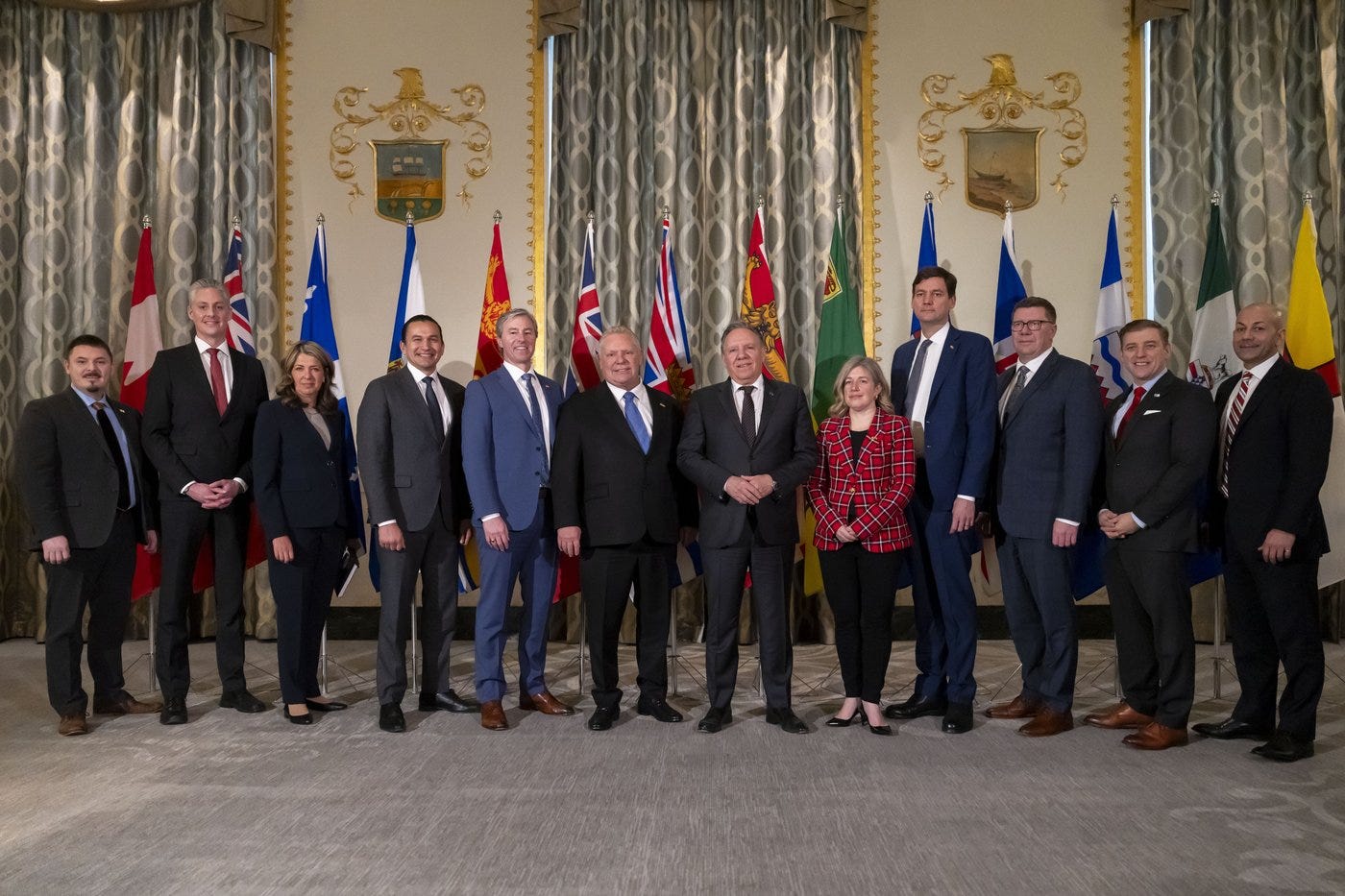Canada and India’s Leaders Meet with Trump’s Advisers in Washington to Discuss Trade and Tariffs
In a high-stakes diplomatic move, Canada’s provincial leaders and Indian Prime Minister Narendra Modi meet with U.S. President Donald Trump’s senior advisers in Washington to address escalating trade

Canadian premiers and Indian Prime Minister Narendra Modi have arrived in Washington, D.C., for important discussions with U.S. President Donald Trump’s senior team. These meetings come in response to increasing concerns about potential tariffs on imports from both Canada and India, as well as broader trade challenges between the U.S., Canada, and India.
For the first time, all 13 leaders of Canadian provinces and territories are in Washington to engage with U.S. officials regarding President Trump’s impending 25% tariffs on steel and aluminum imports from Canada.
These tariffs, scheduled to take effect on March 12, are a significant concern for Canadian officials, who are striving to prevent a trade war. In addition to the tariffs on metals, Trump has also threatened to impose further duties on Canadian automotive exports.
Canada has promised to respond in kind if Trump goes ahead with his tariff threats. Ottawa has already outlined a list of U.S. products that would be targeted, which includes agricultural goods, dairy products, and various industrial materials.
However, after Trump signed his initial executive order on tariffs on February 1, 2025, Canada decided to put its retaliatory tariffs on hold just two days later, when Trump agreed to delay his tariff threats for a month. This pause followed a diplomatic agreement in which Canadian Prime Minister Justin Trudeau proposed a plan to enhance border security and appoint a “fentanyl czar” to address the opioid crisis, a major concern for the U.S.
Meanwhile, Indian Prime Minister Narendra Modi is also in Washington for high-stakes talks aimed at avoiding a trade war with Trump. India is considering tariff cuts in at least a dozen sectors, hoping to sidestep U.S. tariffs that could further strain its already slowing economy. This visit is significant for Modi, who is hoping to build on the strong relationship between India and the U.S., a bond that has included the exchange of personal compliments and friendly gestures from both leaders in the past.
However, Trump’s frustration with India’s high tariffs has been clear. He has called India a “very big abuser,” accusing the country of blocking U.S. imports. Modi’s visit comes just after Trump announced a 25% tariff on global steel and aluminum imports. Trump has indicated this could be the “first of many” tariffs, with potential levies on cars, chemicals, pharmaceuticals, and other goods as part of a strategy of “reciprocal tariffs.”
The metal tariffs have already shaken India’s steel and aluminum industries, which rely heavily on the U.S. as a market for their exports. The Indian Steel Association warned that these tariffs could reduce exports to the U.S. by as much as 85%.
To avoid further punitive action, India recently slashed duties on a variety of U.S. goods, including Harley-Davidson motorcycles, and is considering cuts on other products such as electronics, chemicals, and medical equipment.
Bilateral trade between India and the U.S. has been growing steadily, reaching over $118 billion last year, with India running a $32 billion trade surplus. Trump has expressed his desire for a “fairer” relationship, and Modi has shown openness to discussing a limited trade deal to address U.S. concerns about market access.
Another key area of discussion is defence and energy, with Trump encouraging Modi to purchase more U.S. defence products. India, as the world’s largest arms importer, presents a lucrative market for U.S. defence manufacturers. Additionally, Modi will look to strengthen cooperation on nuclear energy, including small modular reactors, as India seeks to expand its clean energy sources. Reports suggest India is in talks to purchase combat vehicles and finalize a fighter jet engine deal with the U.S.
Illegal migration has also emerged as a point of contention. Trump has pressured Modi to address migration issues, including the deportation of Indian nationals from the U.S.
Last week, 104 Indian migrants were deported, and many more are expected to be sent back. Images of deported individuals shackled during a long military flight sparked anger in India, with some officials calling for more humane treatment. The two leaders are expected to discuss how to manage the return of these migrants.
Modi’s visit will also focus on expanding the H-1B visa program, which is essential for India’s IT workforce in the U.S. Trump has expressed support for the program, which allows skilled foreign workers to fill positions in the tech industry. However, within Trump’s circle, there is division, with figures like Steve Bannon arguing that the H-1B program harms American workers.
Despite the many challenges, Modi’s mission is clear: to ensure that trade relations between India and the U.S. do not devolve into a damaging tariff war while continuing to strengthen the partnership between the two nations.
What are your thoughts?
Comment Below.

